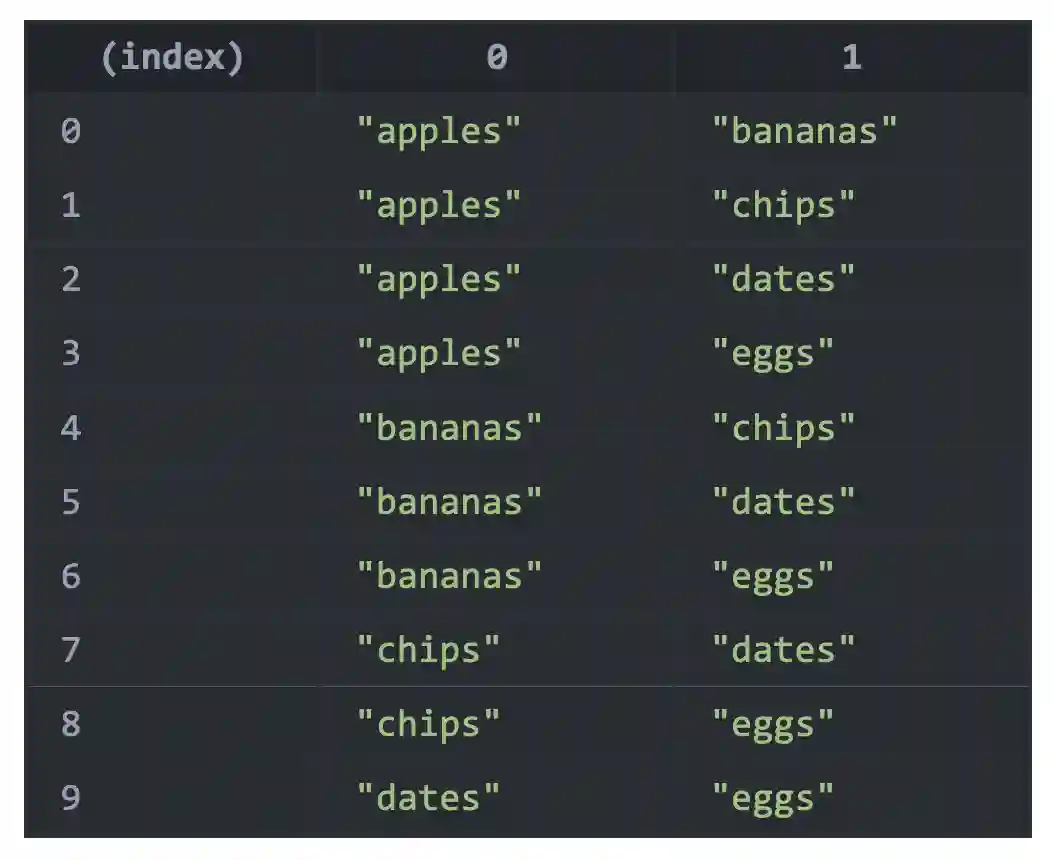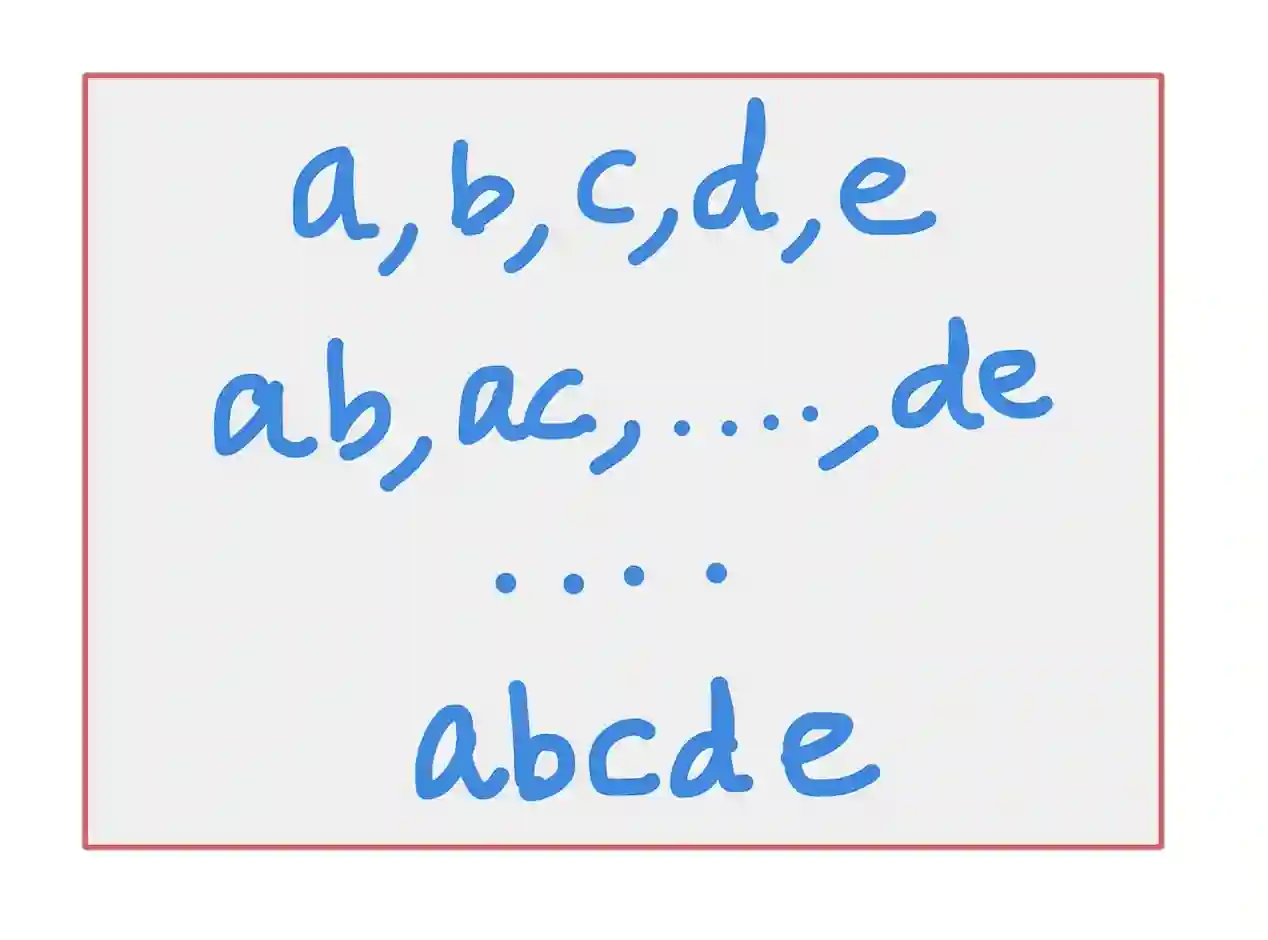[
["apples"],
["bananas"],
["chips"],
["dates"],
["eggs"],
["apples", "bananas"],
["bananas", "chips"],
["chips", "dates"],
["dates", "eggs"],
["apples", "chips"],
["bananas", "dates"],
["chips", "eggs"],
["apples", "dates"],
["bananas", "eggs"],
["apples", "eggs"],
["apples", "bananas", "chips"],
["bananas", "chips", "dates"],
["chips", "dates", "eggs"],
["apples", "chips", "dates"],
["bananas", "dates", "eggs"],
["chips", "dates", "eggs"],
["apples", "bananas", "dates"],
["bananas", "chips", "eggs"],
["apples", "chips", "eggs"],
["apples", "dates", "eggs"],
["bananas", "dates", "eggs"],
["apples", "bananas", "eggs"],
["apples", "bananas", "chips", "dates"],
["bananas", "chips", "dates", "eggs"],
["apples", "chips", "dates", "eggs"],
["apples", "bananas", "dates", "eggs"],
["apples", "bananas", "chips", "eggs"],
["apples", "chips", "dates", "eggs"],
["bananas", "chips", "dates", "eggs"],
["apples", "bananas", "chips", "dates", "eggs"]
]

